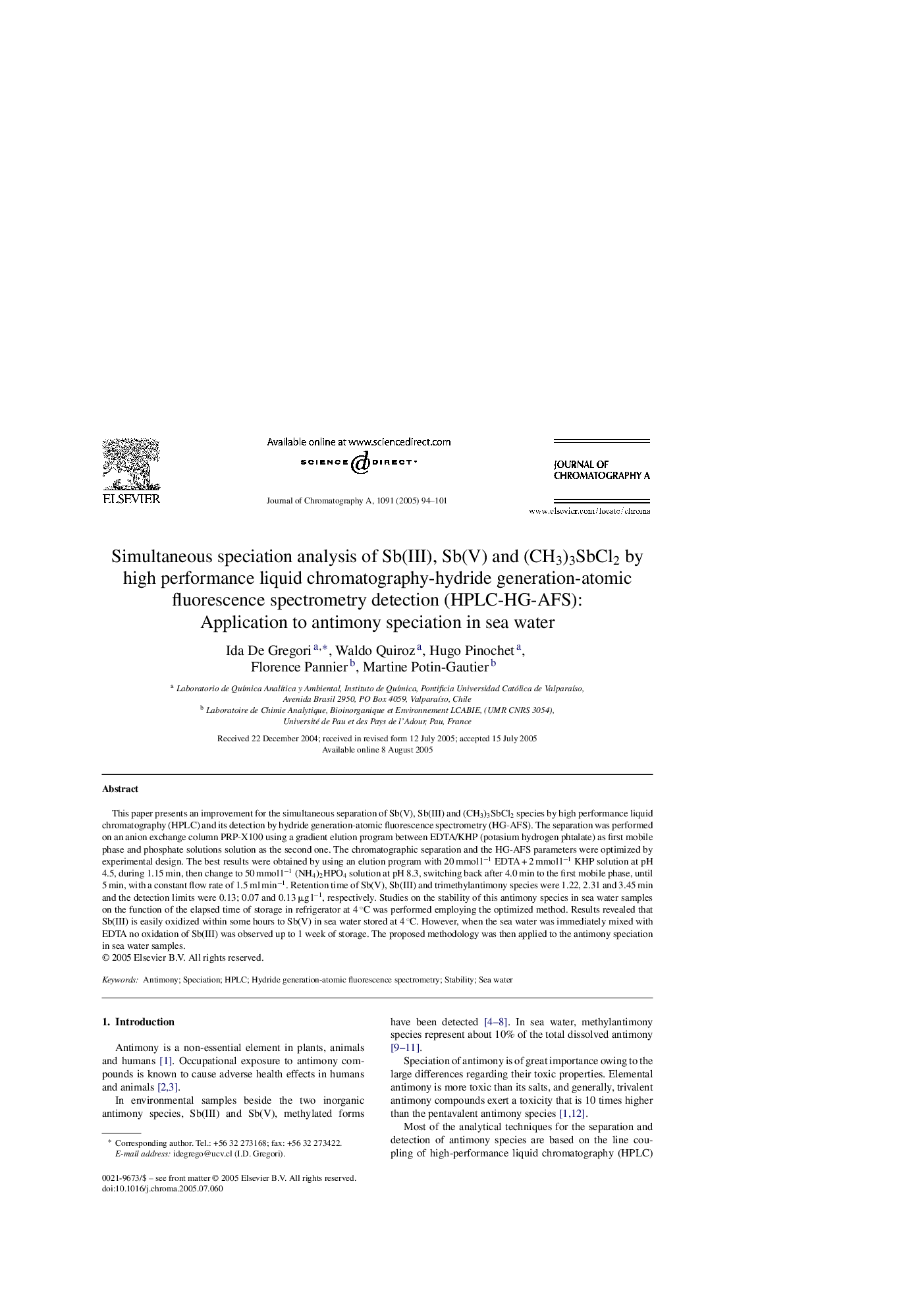| Article ID | Journal | Published Year | Pages | File Type |
|---|---|---|---|---|
| 9748663 | Journal of Chromatography A | 2005 | 8 Pages |
Abstract
This paper presents an improvement for the simultaneous separation of Sb(V), Sb(III) and (CH3)3SbCl2 species by high performance liquid chromatography (HPLC) and its detection by hydride generation-atomic fluorescence spectrometry (HG-AFS). The separation was performed on an anion exchange column PRP-X100 using a gradient elution program between EDTA/KHP (potasium hydrogen phtalate) as first mobile phase and phosphate solutions solution as the second one. The chromatographic separation and the HG-AFS parameters were optimized by experimental design. The best results were obtained by using an elution program with 20 mmol lâ1 EDTA + 2 mmol lâ1 KHP solution at pH 4.5, during 1.15 min, then change to 50 mmol lâ1 (NH4)2HPO4 solution at pH 8.3, switching back after 4.0 min to the first mobile phase, until 5 min, with a constant flow rate of 1.5 ml minâ1. Retention time of Sb(V), Sb(III) and trimethylantimony species were 1.22, 2.31 and 3.45 min and the detection limits were 0.13; 0.07 and 0.13 μg lâ1, respectively. Studies on the stability of this antimony species in sea water samples on the function of the elapsed time of storage in refrigerator at 4 °C was performed employing the optimized method. Results revealed that Sb(III) is easily oxidized within some hours to Sb(V) in sea water stored at 4 °C. However, when the sea water was immediately mixed with EDTA no oxidation of Sb(III) was observed up to 1 week of storage. The proposed methodology was then applied to the antimony speciation in sea water samples.
Keywords
Related Topics
Physical Sciences and Engineering
Chemistry
Analytical Chemistry
Authors
Ida De Gregori, Waldo Quiroz, Hugo Pinochet, Florence Pannier, Martine Potin-Gautier,
